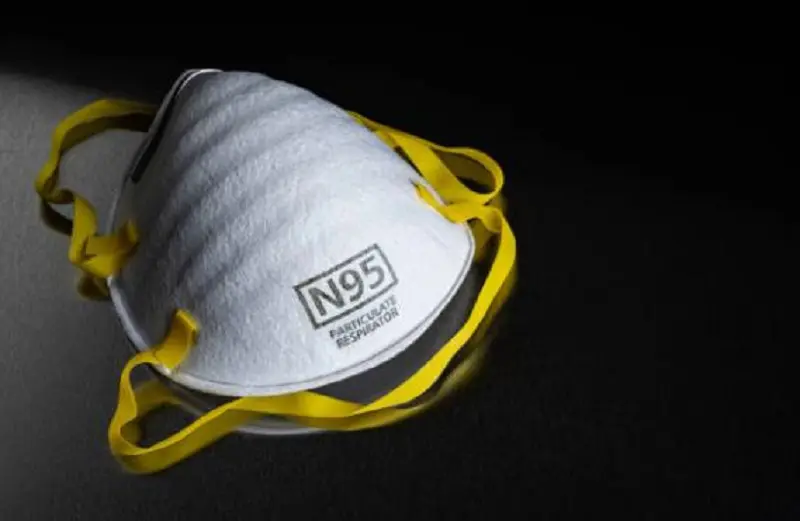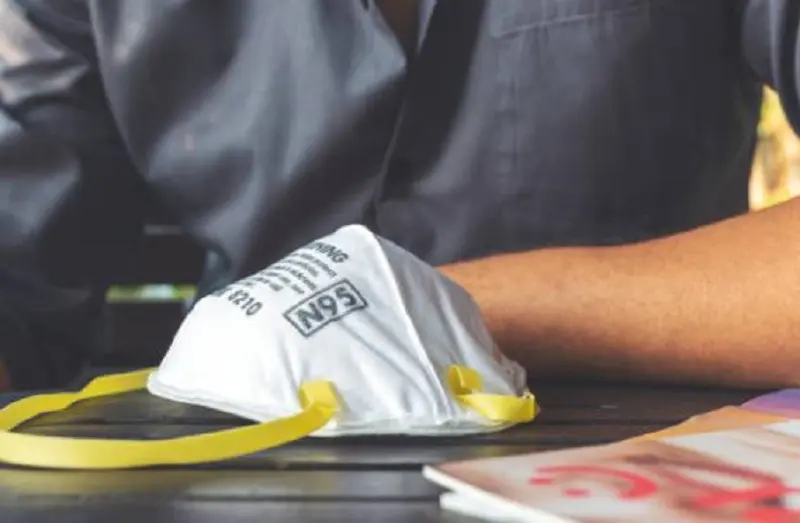Why should N95 masks be cleaned? How often should they be cleaned? This post discusses how to clean N95 masks without destroying them.
N95 masks are intended to be used only once. However, the COVID- 19 pandemics has caused a limited supply of these masks and thus the need to clean and reuse them.

Like surgical masks, n95 respirators are used to protect the wearer from airborne contaminated particles and liquid droplets. N95 masks have a high fluid resistance and that is why they are very efficient in the filtration of airborne particles.
Unlike surgical masks which are loose-fitting, N95 masks are designed to have a very close facial fit. The n stands for 'Non- Oil' This means that they can be used in the work environment if no oil-based particles are present. 95 represents its 95% filtration efficiency.
According to the National Health Institute (NIH), the aim of decontamination is to eliminate the SARS-CoV-2 virus from the material and leave the n95 mask in a 'fit for use' shape. The time needed for the decontamination of N95 masks varies depending on the method chosen.

First, let's look at how not to clean the N95 mask:
According to CDC guidelines, these methods interfere with how the N95 filters small particles by breaking down its inherent electrostatic charge. The mask's filtration efficiency is reduced by a third to a half.
- Spraying with aerosol or liquid alcohol
- Washing with soapy water
While some of the procedures require specialized equipment, others are so simple that they can be used at home.
As long as the virus is outside the human body, it is not hard to kill it. According to Michael Mina, an assistant professor of epidemiology at Harvard University's T.H. Chan School of Public Health, a simple way could be to let the N95 mask sit outside for at least two weeks. He says that the virus tends to die out after 10 days or so. The only limitation of this method is that it is slow and not practical under the prevailing COVID-19 circumstances.
The four common ways used to kill viruses are fumigation, baking, steaming and heating in hot water. These methods have been proven to be effective in killing viruses but may not be applicable here because of their effect on the integrity of the N95 mask. This article seeks to discuss decontamination methods that will leave the n95 mask as good as new.
3M, the largest manufacturer of N95 masks in the US, has provided conditions that a decontamination method must meet:
- Should not damage the respirator's infiltration
- Should not interfere with the respirator's facial fit
Some methods will definitely fail this method. For example, microwaving fail this test as it melts the mask. On the other, the use of alcohol destroys the electrostatic charge within the n95 mask that is responsible for trapping airborne particles.
- Should be effective against the target organism, in this case, SARS-CoV-2 virus (this is the virus that causes Coronavirus disease 2019)
The three methods recommended by CDC that can be used to clean N95 masks are discussed in detail below:
This is an effective method for cleaning N95 masks that can be used at home. Dry heat satisfies all the conditions required of a decontamination method. It does not affect the filtration performance of N95 masks. Secondly, it doesn't leave residual harmful chemicals.
Dry heat is highly recommended because it is easily available. It can be generated by electric heating appliances such as rice cookers.
Studies suggest 100 for 50 minutes as the ideal method for disinfecting N95 masks for reuse. Temperatures lower than 100℃ may require longer treatment time to eliminate the virus while temperatures above 100℃ may reduce the integrity of the N95 masks.
UV light cleaning is not an entirely new phenomenon as it has been used to clean hospitals in the US before. With the outbreak of COVID-19, UV light has emerged as a safe and cost-effective way to decontaminate n95 masks. This is on the condition that the right amount of light is used within the right length of time. It also must be dosed by a well-understood optic device.
The use of UV light is a low tech and low volume sanitization method suitable for healthcare workers based in rural areas.
The n95 masks to be disinfected by UV light need to be free on any substance both on the inside and on the outside. The presence of substances such as lip balm prevents UV light from working on a particular portion of the N95 mask.
UV light works by destroying the molecular bonds that hold together the nucleic acids of the virus. This stops them from multiplying within the human cell.
A study published in the Canadian Medical Association Journal (CMAJ) shows that when N95 respirators are treated under moist heat, the SARS-CoV-2 virus and bacteria are also eliminated. The moist heat does not also affect its facial fit and functioning.
The definition of moist treatment in the study was 60 min, 70℃ with a 50% relative humidity.
According to Dr. Gregory Borschel, Institute of Biomaterials and Biomedical Engineering and Division of Plastic and Reconstructive Surgery, The Hospital for Sick Children (SickKids), Toronto, Ontario, the n95 mask can be treated 10 times without its filtration efficiency and facial being tampered with.
In conclusion, as scientists work round the clock to find a vaccine and possible cure for COVID-19, there is a need to find ways to decontaminate and reuse N95 masks. The decontamination methods should not interfere with the respirator's facial.
The respirator should be as good as new after disinfection. Cleaning methods that alter the respirator's electrostatic charge such as chlorine-based solutions should be avoided.

